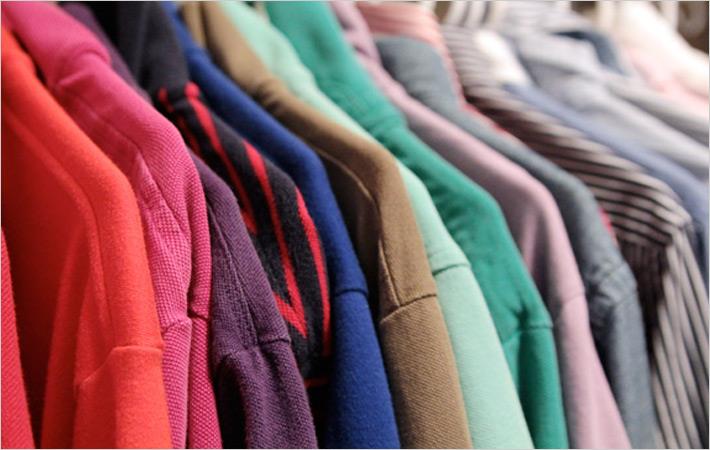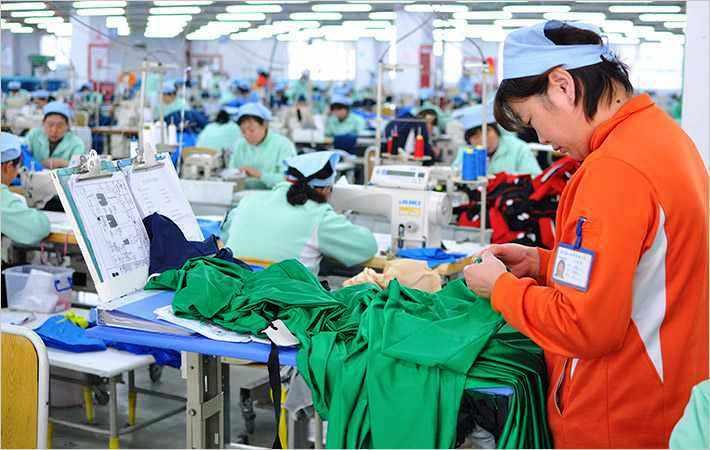Vietnam is already the world’s fourth-biggest garment exporter, but will gain new preferential access to markets among the 11 other countries that have signed the TPP as well as the 28 EU member countries under the EU-Vietnam FTA. These are lucrative markets for Asia’s garment exporters who supply apparel to leading Western brands.
The World Bank estimates that the TPP deal alone could see Vietnam’s exports — from clothing and footwear to coffee and seafood — increase by 30% and boost the country’s economic growth by 10% by 2030.
The TPP needs to be ratified by the U.S. and several other countries, delaying implementation until at least 2017, while under the EU-Vietnam FTA, it will take seven years before duties on Vietnam’s garment exports there are completely eliminated.
Even so, key regional apparel producers such as Cambodia and Myanmar are already alarmed that the trade pacts could help Vietnam undercut their vital garment industries. China and Bangladesh, the world’s two biggest garment exporters, are also likely to be affected, as are Indonesia and Pakistan, which have large but struggling textile and apparel sectors.
“Vietnam’s trade deals will be a concern — not just for us, but the whole region,” Khine Khine Nwe, secretary-general of the Myanmar Garment Manufacturers Association, told the Nikkei Asian Review.
According to MGMA, 38% of Myanmar’s apparel exports went to Japan in 2013, followed by South Korea at 31%. “Most of the factories in Myanmar produce for the Korean and Japanese markets,” said Jay Kim, managing director of garment maker Opal International in Yangon. He suggested that Vietnam’s favored trade status with the EU and the U.S. might not severely affect Myanmar for now. Japan is also a TPP signatory.
Myanmar garment makers look to Europe as both a market and a source of investment, with garments a key part of the country’s plans to become a manufacturing economy.
The EU cut duties on Myanmar’s exports to Europe in 2013 as part of a market access program for less developed countries. Around 20% of Myanmar’s garment exports now go to the EU, a proportion that is likely to grow, following similar trends in Cambodia, which saw its exports to the EU increase from 28% of its total garment exports in 2011 to 42% in 2014 under the same program.
But the EU will gradually reduce its duties, currently 11.7%, on garments from Vietnam, where labor productivity is higher than in Cambodia.
Kim said that 90% of Opal’s exports go to South Korea, but the company, which employs 5,000 people in three factories in Yangon, hopes to attract orders from Europe and the U.S.
“Last year, U.S. buyers surveyed the Myanmar market, but they are waiting. Maybe after April they will start,” Kim said, referring to when the incoming government led by Aung San Suu Kyi will take charge.
Myanmar could still face a challenge from Vietnam, which stands to at least double exports to the U.S. once the TPP takes effect, according to industry officials.
COST ASSESSMENT Indonesia, which sends half of its textile and garment exports to the U.S. and the EU, is also under threat. With high energy costs reducing the country’s competitiveness, the government cut nighttime electricity tariffs last October to reduce manufacturer overheads.
“The main challenges are the cost of electricity is too high,” said Ade Sudrajat, chairman of the Indonesian Textiles Association. “The second thing is market access to the EU and the U.S. If we can meet these two challenges then growth can be in double digits.”
But the challenge posed by regional rivals Malaysia and Vietnam joining the TPP has prompted concerns in Jakarta. Despite the fact that Indonesia’s economy is four times the size of Vietnam’s, Vietnam’s exports to the EU stood at $22.2 billion in 2014, compared with Indonesia’s $14.4 billion.
“MAJOR THREAT” Most exposed of all could be Cambodia, where the garment sector is a main pillar of the country’s small economy. According to the International Labor Organization, the industry employs more than 700,000 workers and accounted for $5.3 billion — roughly 80% — of Cambodia’s total export revenue in 2014.
Ken Loo, secretary-general of the Garment Manufacturers Association in Cambodia, said the country’s garment sector had already lost U.S. market share to Vietnam due to the latter’s lower labor costs and higher productivity. “If we can’t compete when we are on an equal footing, when the TPP comes … how can we compete then? The short answer is: We are definitely concerned,” he said.
Faruque Hassan, senior vice president of the Bangladesh Garment Manufacturers and Exporters Association, told the NAR that “access to TPP for Vietnam is certainly a concern for apparel exporting countries, especially for Bangladesh.” He noted that Bangladesh will continue to face average duties of 16% on garment exports to the U.S. while Vietnam’s duties will be eliminated.
“Vietnam is an emerging market for garments and has become a major threat, particularly to Pakistan’s value-added textile sector,” the Pakistan Readymade Garment Manufacturers and Exporters Association said in a statement. “After it entered into an FTA with the EU, Vietnam is already exporting $23 billion [worth of] garments against Pakistan’s meager $5 billion textile value-added goods.”
But the TPP also means the authoritarian Vietnamese government will have to allow trade unions to operate and give more rights to factory workers.
Paul Huynh, a director at KPMG Vietnam, said the trade deals “will have a tremendous impact for employees with opportunities to enhance labor standards to meet international best practice, as well as reforms around labor standards.”
If Vietnam lives up to these commitments, it could also benefit from a better reputation than some of its regional rivals. Bangladesh’s reputation has been hurt by several fatal disasters at garment factories, while protests and strikes over working conditions and wages are common in Myanmar and Cambodia, which has led to recent rises in the minimum wage.
Western brands keen to avoid being tainted by allegations of buying from sweatshops could opt to boost their presence in Vietnam. But Hanoi is likely to remain wary of allowing unfettered industrial action, given that union activity elsewhere, such as in Cambodia, has been linked to opposition political parties.
The TPP has strict “rules of origin” stipulations that mean garments made in Vietnam from fabric sourced from countries not party to the deal will not be eligible for preferential access.
Japanese, South Korean and Taiwanese companies are setting up operations in Vietnam to produce textiles and fabrics for local producers such as Vinatex, the country’s largest textile company.
But for smaller companies, the costs associated with buying material from more expensive sources than China, a non-TPP member, could offset any gains they would enjoy from improved access to the U.S. market. “While [Vietnam] will have better preferential access in the U.S. market, its overall competitiveness will actually decline,” said Jayant Menon, an economist with the Asian Development Bank.
SIMON ROUGHNEEN, Asia regional correspondent
Sebastian Strangio in Phnom Penh and Harry Jacques in Jakarta contributed to this report.
Nikkel Asian Review
03/03/2016
Quote from: “http://asia.nikkei.com/magazine/20160303-INDIA-S-STARTUPS-THE-GREAT-DISRUPTORS/Politics-Economy/Asia-s-garment-exporters-brace-for-a-TPP-empowered-Vietnam?page=2“







